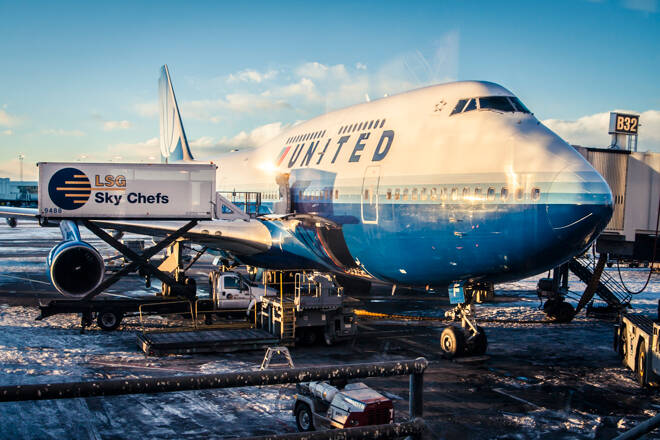Advertisement
Advertisement
United Airlines Warns Of Rising Cancellations
By:
Bookings are declining and cancellations are rising as a result of the surging COVID-19 pandemic.
United Airlines Holdings Inc. (UAL) reduced guidance on Thursday, noting a deceleration in bookings and increase in cancellations as a result of the surging COVID-19 pandemic. Major airline carriers had booked stronger-than expected traffic over the summer months, as the virus faded from the front pages in most parts of the world. Several CEOs upwardly revised dismal forecasts during that period, allowing complacency to overcome common sense.
Business Travel Will ‘Go Away’
Former Microsoft Corp. (MSFT) Bill Gates put a damper on Boeing Co. (BA) and the airline sector on Wednesday, declaring that 50% of business travel will ‘go away permanently’ because of technology like the virtual meeting software offered by Zoom Video Communications Inc. (ZM). He also predicted 30% of people will be working from home in the long-term, allowing corporations to become leaner and meaner, with fewer-owned properties and multiyear leases.
United Airlines now expects fourth quarter capacity to drop ‘at least’ 55% compared to same quarter in 2019. It also guided for a 67% reduction in revenue, below prior forecasts. The company will also burn cash at a faster rate, eating up approximately $15 million to $20 million, plus $10 million of average debt principal and severance payments per day. None of these forecasts bode well for Delta Air Lines Inc. (DAL) or American Airlines Group Inc. (AAL).
Wall Street And Technical Outlook
Wall Street consensus has deteriorated in recent months, now standing at a neutral ‘Hold’ rating based upon 5 ‘Buy’, 7 ‘Hold’, and 2 ‘Sell’ recommendations. Price targets currently range from a low of $32 to a Street-high $54 while the stock is set to open Thursday’s U.S. session right at the median $41 target. Capacity news and vaccine updates should drive price action into 2021 with this mid-range placement, suggesting limited upside.
The stock posted an all-time high at 97.85 in 2018 and entered a narrow consolidation that broke to the downside in February 2020, also breaking multiple support levels going back to 2013. The 2016 low in the upper 30s is now getting tested while continued upside will run into a buzz saw of resistance in the 50s, where the 2017 low and 200-week moving averages are narrow-aligned. On the downside, bears will gain control of the tape if a selloff pieces rising 2020 lows near 30.
For a look at all of today’s economic events, check out our economic calendar.
About the Author
Alan Farleyauthor
Alan Farley is the best-selling author of ‘The Master Swing Trader’ and market professional since the 1990s, with expertise in balance sheets, technical analysis, price action (tape reading), and broker performance.
Advertisement
